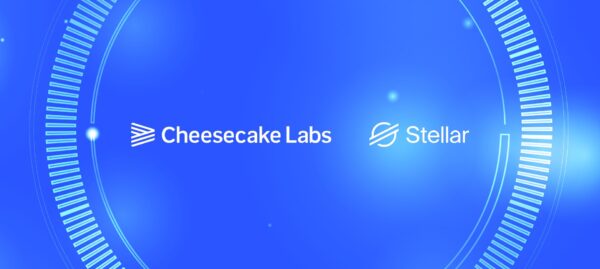What Are Stablecoins, and Why Should You Know About Them?
Gabriel Soares | Nov 26, 2025

At Cheesecake Labs we’ve recently become an integration partner with Stellar and have been excitedly diving into Stellar development. We’ve had to learn all about the technology from Stellar’s engineering and business teams in order to help our clients leverage Stellar’s blockchain. So we’ve put together a little crash course on Stellar, how it works, and some of the features of the technology.
Stellar is a cryptocurrency-adjacent technology. Similar to cryptocurrencies like Bitcoin, it’s a system for sending and processing currencies digitally.
Unlike Bitcoin, however, the value of Stellar is not in its bespoke currency. Stellar is not trying to get users to invest in “the coin of the future.” Instead, it’s a tool for facilitating transactions in any fiat currency digitally. Kind of like PayPal, but simpler, faster, and more affordable.
To be clear, Stellar does have its own cryptocurrency: Lumens. However, this is only used to initialize accounts and make transactions.
The Stellar Development Foundation (SDF) is the organization that maintains and grows the Stellar blockchain, network, and user base. It’s a non-profit group and, critically, does not own Stellar. Stellar, like many decentralized cryptocurrencies, isn’t owned by anyone in particular. Like the internet, you “own” it just by using it.
Stellar was created in 2014 by David Mazières, Joyce Kim, and Ripple co-founder Jed McCaleb. Eventually, Stripe co-founder Patrick Collision joined them to help form the SDF to manage the Stellar network. Stripe also provided the initial funding required to bring Stellar to market.
Today, you can find Stellar’s source code on Github. You’ll also find several banks and businesses using the Stellar network in a variety of ways.
At its core, Stellar is a blockchain network. In the same way that Bitcoin and Ethereum have their blockchains, so too does Stellar. Lumens, which are the cryptocurrency associated with Stellar, are not the same thing as Stellar itself. They’re the coin that’s traded over the Stellar Network, but the value of Stellar is in its blockchain.
In short, Stellar allows users to create their own tradable tokens. Unlike Bitcoin’s blockchain, which is exclusively used for the trading of Bitcoin, Stellar is built to trade tokens. These tokens are essentially digital representations of other assets or currencies.
For example, say you wanted to trade bricks for wheat. On the Stellar network, you could specify how many tokens each brick is worth, then how much each bushel of wheat is worth. Two parties can then trade them back and forth digitally, using the tokens you choose as the medium of exchange.
This can apply to trading hours, art, existing fiat currencies like Euros or US dollars, or even a company/community-specific token.
It’s this versatility – powered by a fast, cheap and energy-efficient blockchain – that makes Stellar so powerful. This unique token system makes Stellar excel at things like cross-border payments and low-cost transfers.
What is the Stellar Consensus Protocol (SCP)?
The Stellar Consensus Protocol (SCP) is a way of proving Stellar’s ledger. It’s what verifies transactions through the Stellar network.
Stellar uses the first Federated Byzantine Agreement, which allows individuals to verify transactions. This is a first, as previous systems relied on a single entity to verify transactions or everyone using the system. FBA technology streamlines this process without compromising security, making it far faster than other systems.
Anyone can create their own assets with Stellar. And it’s a very simple process! Creating custom assets is baked into Stellar’s core as a native feature. You don’t have to worry about complicated smart contracts. All you have to do is create a transaction with your desired asset. Once that transaction is processed, your custom asset is added to the Stellar network.
Stellar also makes it easy to connect your assets to a decentralized exchange (DEX) or a liquidity pool.
Any token on the Stellar network can be traded with any other token. That’s because Stellar uses Lumens as the medium of exchange. This allows you to send any currency you like and have it arrive as another currency. Conversion isn’t a secondary step — it happens during the transaction itself.
On the Stellar network, anchors refer to financial institutions and businesses that allow users to make transactions with traditional fiat currency over the Stellar network. This includes banks, stores, retailers, and more, creating tokens and avenues for consumers to make transactions through Stellar.
Stellar makes cross-border payments possible without the need for traditional wire transfers, which are slow and costly. Using tokens and anchors, businesses and individuals can transact with one another. Transactions are carried between two points by anchors to make the transaction as fast and affordable as possible.
Businesses all over the world are already making use of the Stellar network in a variety of ways. SatoshiPay uses Stellar to replace ads on its content with micro-transactions. Saldo helps migrant workers support family members back home. Vibrant allows people in areas like Argentina, which don’t have a stable fiat currency, to quickly and cheaply convert their currency into a stable option.
Stellar and the SDF’s goal is to bring about a future where spending money is faster, more affordable, and more widely available to everyone. Stellar’s recently announced partnership with Moneygram will help enable cash funding and payouts in multiple currencies, all through the Stellar blockchain. MoneyGram’s position as one of the largest money transfer services in the world will no doubt bolster Stellar’s popularity and promote wider adoption.
The world is already running on a modern digital economy. It’s time our spending caught up, and Stellar is on track to make that transition easier for everyone.

Marcelo is CEO of Cheesecake Labs and a Forbes Technology Council member, recognized as a Top Changemaker in Mobile Apps and featured on Mobile App Daily's '40 Under 40' list. With 10+ years of experience, he drives innovation across the U.S. and Brazil.


